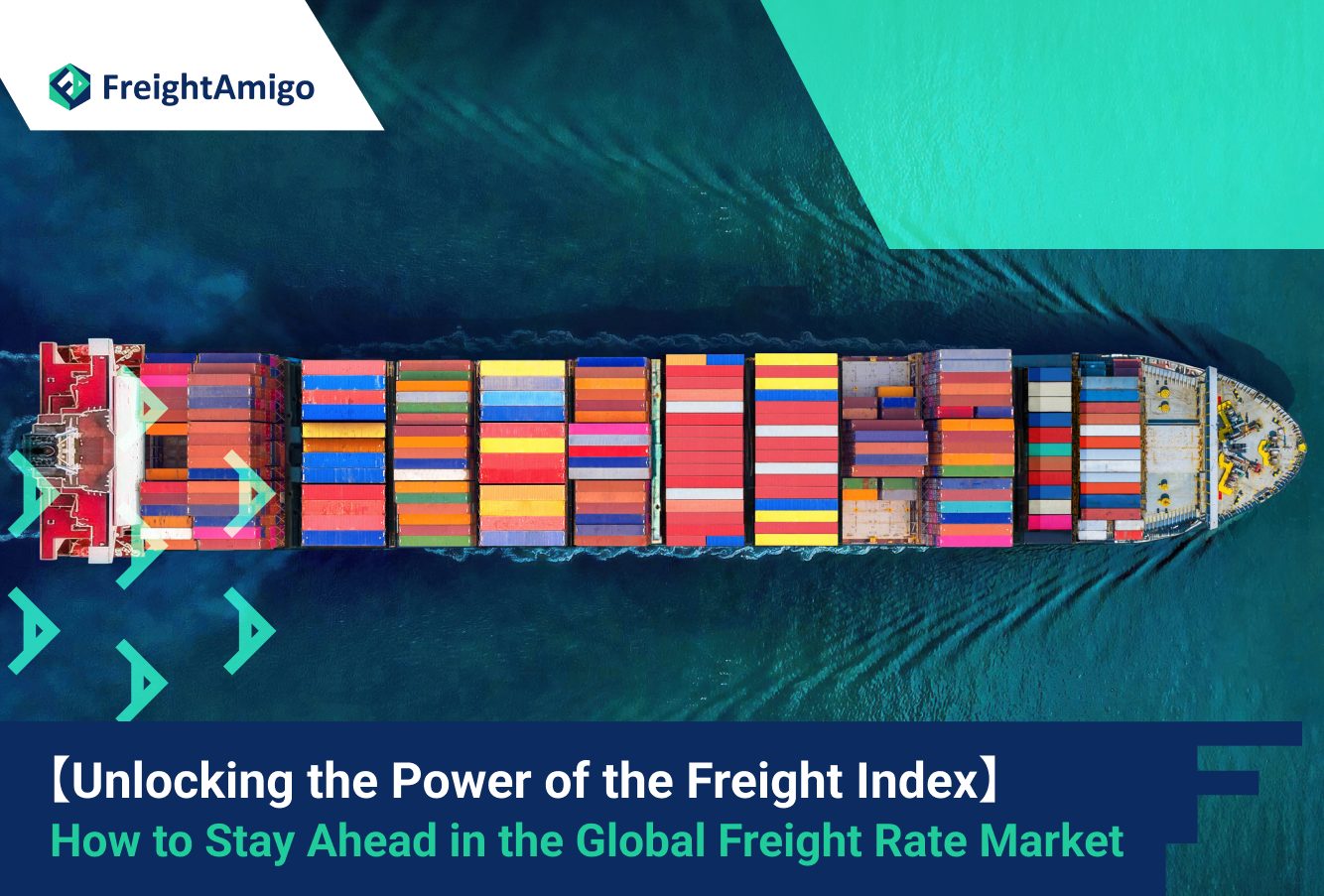Introduction to the freight index
The global freight rate market is a complex and ever-changing landscape. With so many factors influencing rates, it can be challenging for businesses to stay ahead and make informed decisions. This is where the freight index comes into play. The freight index is a valuable tool that provides insights into the market trends and helps businesses navigate the fluctuations in freight rates.
Author Name: Caspian Ng – Marketing Analyst at FreightAmigo
Want To Compare The Best Express, Air Freight, Sea Freight, Rail Freight & Trucking Rates So As To Have Better Control On Cost?
What is the Containerized Freight Index (CFI)?
One of the most widely used freight indices is the Containerized Freight Index (CFI), which is published by the Baltic Exchange. The CFI is a comprehensive measure of the average cost to ship a container across major trade routes. It takes into account various factors such as the size of the vessel, the type of cargo, and the distance traveled. By tracking the CFI, businesses can gain a better understanding of the overall market conditions and make more informed decisions regarding their shipping strategies.
The importance of the freight index in the global freight rate market
The freight index plays a crucial role in the global freight rate market. It provides businesses with valuable insights into the current market conditions and helps them anticipate future trends. By monitoring the freight index, businesses can identify patterns and fluctuations in rates, enabling them to plan and budget more effectively. Additionally, the freight index allows businesses to benchmark their performance against industry standards and make adjustments to their shipping strategies accordingly.
How to interpret and analyze the freight index
Interpreting and analyzing the freight index requires a deep understanding of the market dynamics and the factors that influence rates. Firstly, businesses need to familiarize themselves with the components of the index and how they are weighted. This includes understanding the different trade routes and the types of cargo considered in the index. Additionally, businesses should analyze historical data and trends to identify patterns and correlations. By doing so, they can gain insights into the underlying factors driving changes in freight rates and make more accurate predictions.
Benefits of using the freight index for businesses
Using the freight index has several benefits for businesses operating in the global freight rate market. Firstly, it provides businesses with a benchmark to compare their own rates and performance against industry standards. This allows them to identify areas for improvement and make strategic decisions to stay competitive. Secondly, the freight index helps businesses make more accurate forecasts and budget effectively. By having access to real-time market data, businesses can anticipate market fluctuations and adjust their shipping strategies accordingly. Lastly, the freight index enables businesses to negotiate better rates with carriers. Armed with market insights, businesses can enter negotiations with carriers and leverage their position to secure more favorable terms.
Strategies to stay ahead in the global freight rate market using the freight index
To stay ahead in the global freight rate market, businesses can employ several strategies using the freight index. Firstly, businesses should regularly monitor the freight index to stay updated on market trends and fluctuations. This will allow them to make timely adjustments to their shipping strategies and take advantage of favorable market conditions. Secondly, businesses should leverage the insights provided by the freight index to negotiate better rates with carriers. By understanding the market dynamics, businesses can position themselves as informed and valuable partners to carriers, increasing their bargaining power. Lastly, businesses should use the freight index to identify potential cost-saving opportunities. By analyzing the index and identifying areas of inefficiency, businesses can optimize their shipping operations and reduce costs.
Challenges and limitations of the freight index
While the freight index is a valuable tool, it is not without its challenges and limitations. Firstly, the freight index may not capture all the nuances of the market. Factors such as geopolitical events, weather disruptions, and capacity constraints may not be fully reflected in the index. Secondly, the freight index may not provide a complete picture of the market conditions for specific routes or cargo types. This means that businesses may need to supplement the information from the freight index with additional research and data analysis. Lastly, the freight index is subject to volatility and may not always accurately predict future trends. Businesses should use the freight index as a guide and consider other factors when making strategic decisions.
Conclusion: Leveraging the power of the freight index for business success
In conclusion, the freight index is a powerful tool that can help businesses navigate the complexities of the global freight rate market. By using the freight index, businesses can gain valuable insights into market trends, benchmark their performance, and make more informed decisions. However, it is important to recognize the limitations of the freight index and supplement its information with additional research and analysis. By leveraging the power of the freight index, businesses can stay ahead in the global freight rate market and achieve long-term success.
There Are Different Options For Cargo Transportation. If You Want To Choose The Most Convenient And Suitable Solution, It Is Best To Have The Full Support Of Logistics Experts! If You Are Planning To Ship Goods Overseas, Please Go To The FreightAmigo Page For Inquiries.
===
Read More:
【Blockchain Technology】A Game Changer for Transparent and Secure Financial Transactions in Logistics
【Financial Technology】Blockchain Revolutionizing the Logistics Industry with Smart Contracts
【Streamlining Supply Chains】The Power of Blockchain in Logistics
===
If you have any inquiries on logistics/supply chain, feel free to contact FreightAmigo now:
Chat with us online OR
Phone : +852 28121686
WhatsApp: +852 27467829









































